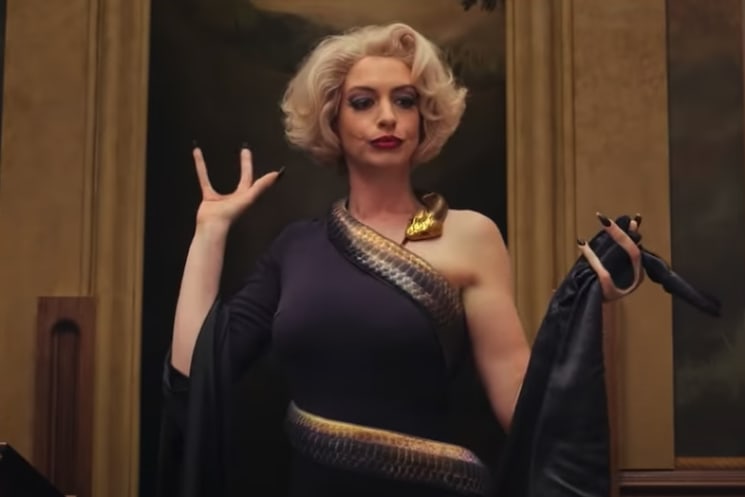Earlier this week, the team behind Robert Zemekis' film adaptation of Roald Dahl's The Witches issued an apology to people with limb differences over the film's ableist depictions. Now, lead actor Anne Hathaway has shared an apology of her own.
Hathaway released her statement alongside a video from the Lucky Fin Project, an organization that raises awareness and celebrates individuals living with limb differences.
Hathaway wrote:
I have recently learned that many people with limb differences, especially children, are in pain because of the portrayal of the Grand High Witch in The Witches.
Let me begin by saying I do my best to be sensitive to the feelings and experiences of others not out of some scrambling PC fear, but because not hurting others seems like a basic level of decency we should all be striving for. As someone who really believes in inclusivity and really, really detests cruelty, I owe you all an apology for the pain caused. I am sorry. I did not connect limb difference with the GHW when the look of the character was brought to me; if I had, I assure you this never would have happened.
I particularly want to say I'm sorry to kids with limb differences: now that I know better I promise I'll do better. And I owe a special apology to everyone who loves you as fiercely as I love my own kids: I'm sorry I let your family down.
If you aren't already familiar, please check out the [Lucky Fin Project] and the #NotAWitch hashtag to get a more inclusive and necessary perspective on limb difference.
Previously, Warner Bros. had come under fire for the children's movie, as well as a promo video titled "How to Spot a Witch." The video identifies witches — led by Hathaway — by a number of features including having "claws" instead of hands. The "claws" are depicted in the film as having two fingers and a thumb. In real life, this congenital condition is commonly known as ectrodactyly or "split hand."
The video sparked the #NotAWish hashtag on Twitter and inspired the Paralympic Games organization to speak out against the film's creators. The organization argued that "limb difference is not scary" and that these differences should be normalized and celebrated.
See Hathaway's post below and visit the Lucky Fin Project to learn more.
Hathaway released her statement alongside a video from the Lucky Fin Project, an organization that raises awareness and celebrates individuals living with limb differences.
Hathaway wrote:
I have recently learned that many people with limb differences, especially children, are in pain because of the portrayal of the Grand High Witch in The Witches.
Let me begin by saying I do my best to be sensitive to the feelings and experiences of others not out of some scrambling PC fear, but because not hurting others seems like a basic level of decency we should all be striving for. As someone who really believes in inclusivity and really, really detests cruelty, I owe you all an apology for the pain caused. I am sorry. I did not connect limb difference with the GHW when the look of the character was brought to me; if I had, I assure you this never would have happened.
I particularly want to say I'm sorry to kids with limb differences: now that I know better I promise I'll do better. And I owe a special apology to everyone who loves you as fiercely as I love my own kids: I'm sorry I let your family down.
If you aren't already familiar, please check out the [Lucky Fin Project] and the #NotAWitch hashtag to get a more inclusive and necessary perspective on limb difference.
Previously, Warner Bros. had come under fire for the children's movie, as well as a promo video titled "How to Spot a Witch." The video identifies witches — led by Hathaway — by a number of features including having "claws" instead of hands. The "claws" are depicted in the film as having two fingers and a thumb. In real life, this congenital condition is commonly known as ectrodactyly or "split hand."
The video sparked the #NotAWish hashtag on Twitter and inspired the Paralympic Games organization to speak out against the film's creators. The organization argued that "limb difference is not scary" and that these differences should be normalized and celebrated.
See Hathaway's post below and visit the Lucky Fin Project to learn more.
